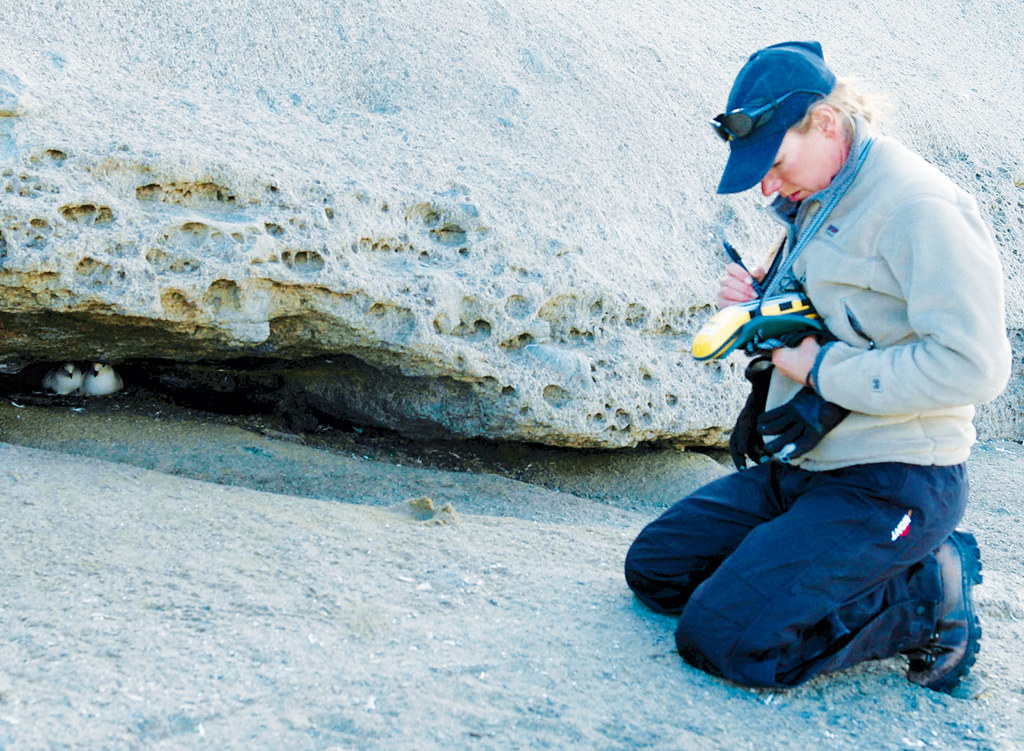I wanted to know why snow petrels nest in certain places and not in others. So, I spent six months scrambling down hills around Casey Station looking for snow petrel nests. I recorded their exact
location using a Global Positioning System (GPS) and collected information about the environment around the nest. It turns out that snow petrels choose very peculiar places to nest. You might think being surrounded by snow would make you feel cold, but it is the exact opposite for snow petrels. Sometimes, these birds use snow as an insulation material — in the same way that mountaineers dig snow caves to protect themselves for the night. They actually try to keep a little bit of snow inside
their nest cavities to build walls around them, because it protects them from the wind and maintains some heat in the nest.
Because Antarctica is so big, no one can visit every single rocky area along the coast to count snow petrels in the field. So, I used computer modelling software to work out where the birds might be nesting elsewhere. Then I had to test my predictions. After two years, I got the chance to go to Antarctica again and see if my computer work was reflecting what actually happens. I found that the computer analysis could predict where the snow petrels were nesting at Mawson. I was very happy, because my models worked!
It’s likely that my models can be applied to other unsurveyed areas of East Antarctica and to other species. By understanding the relationships between species and their environment, we can better predict the impact of climate change on these habitats.

No comments:
Post a Comment